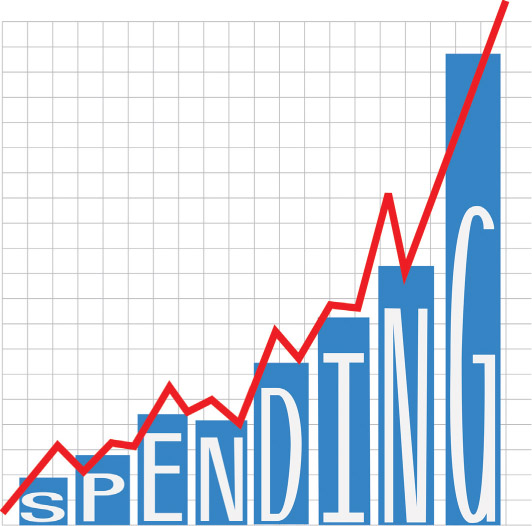17.2 Objectives of the Australian economy
The objectives of the Australian economy are to satisfy the needs and wants of consumers. While there is an expectation that all consumers will have access to the goods and services they need, sometimes the government (state and/or federal) has to intervene in the economy to ensure that economic activity allows for a prosperous economy.
The Australian government targets a number of economic objectives to provide greater equality and higher living standards. For consumers to benefit, the government has a range of objectives such as economic growth, distribution of income and external stability and trade. Governments use a range of measures to achieve economic growth and stability, mainly through budgetary (fiscal) policy which outlines government revenue and expenditure.

A snapshot of the Australian economy in 2013
- With an annual gross domestic product (GDP) of about $15 trillion, Australia has the thirteenth largest economy in the world.
- Australia has the fourth largest economy in the Asia-Pacific region.
- Australia is the nineteenth largest exporter and importer.
- 68% of GDP comes from the service sectors.
- 19% of GDP comes from the mining or mining related sector.
- Between 1901 and 2000, GDP grew at an average annual rate of 3.4%.
- Australia had the fifth highest GDP per capita. This is higher than those in the UK, Germany and France in terms of consumer purchasing power.
- Australians each have a median wealth of $222 000. This is eight times the world average.
- Australia is the world’s leading coal exporter.
Since the Global Financial Crisis (GFC) successive federal governments have used fiscal policy to try to support and maintain economic growth and stability. When the government wants to stimulate or expand economic activity it will increase government spending and may run a budget deficit. If there are pressures on the economy in terms of inflation and high levels of consumer spending, the government may decide to reduce or contract spending to restrict pressures on the economy. In this case the government may try to run a budget surplus, meaning money is taken out of the economy.
Over 2013 and 2014 the Australian government had to tackle a number of issues and pressures including:
- Consumers and businesses did not have a lot of confidence in the lead-up to the 2013 federal election.
- Mining investment was strong and there was some improvement in home construction.
- Government spending cuts in America also slowed economic growth.
- The International Monetary Fund (IMF) expected global economic growth of around 3.5% in 2014.
- In Australia it was expected that mining exports (goods sent overseas) and home building would both increase.
- Consumer confidence was expected to improve.
- Jobs growth was expected to increase.
DEVELOPING YOUR UNDERSTANDING 17.4
Read the extract and answer the questions below.
In order to have any hope of returning the budget to a sustainable surplus, the Abbott government needs to pursue a radical microeconomic reform agenda, including putting market share restrictions on the big banks and supermarkets.
It says that, as well as tightening the budget by reining in spending, the government needs to focus on reforms that target productivity because the economy desperately needs a domestic driver of growth.
It comes as Mr Hockey foreshadows the possibility of real wage declines in Australia, warning on Sunday that wages have been growing faster than inflation in recent years, but that this might not always be the case.
The report from economic consultancy Macroeconomics has been released less than a month before the budget.
It warns that, without remedial action, the federal budget deficit could be worse than the government is forecasting by 2019–20.
But it predicts that the federal budget could remain in ‘double-digit’ deficit until at least 2027–28 – which is four years longer than the government expects – after taking account of all federal policy changes since the Mid-Year Fiscal and Economic Outlook.
‘[It should subject] the grocery retail industry (the Woolworths and Coles juggernaut) and retail banking industry (the four major banks) to market share restrictions [to prevent] these oligopolies from further branching out into non-core activities, subsidised by their core businesses,’ the report recommends.
Source 17.9 Extract based on the article ‘Budget deficit worse than thought, radical reform needed’
- Define the following concepts:
- budget
- productivity
- wages
- economic growth.
- Explain why it would be a problem for Australia if the budget was in deficit until 2027–28.
- Describe what you think it meant by ‘a radical microeconomic reform agenda’.
